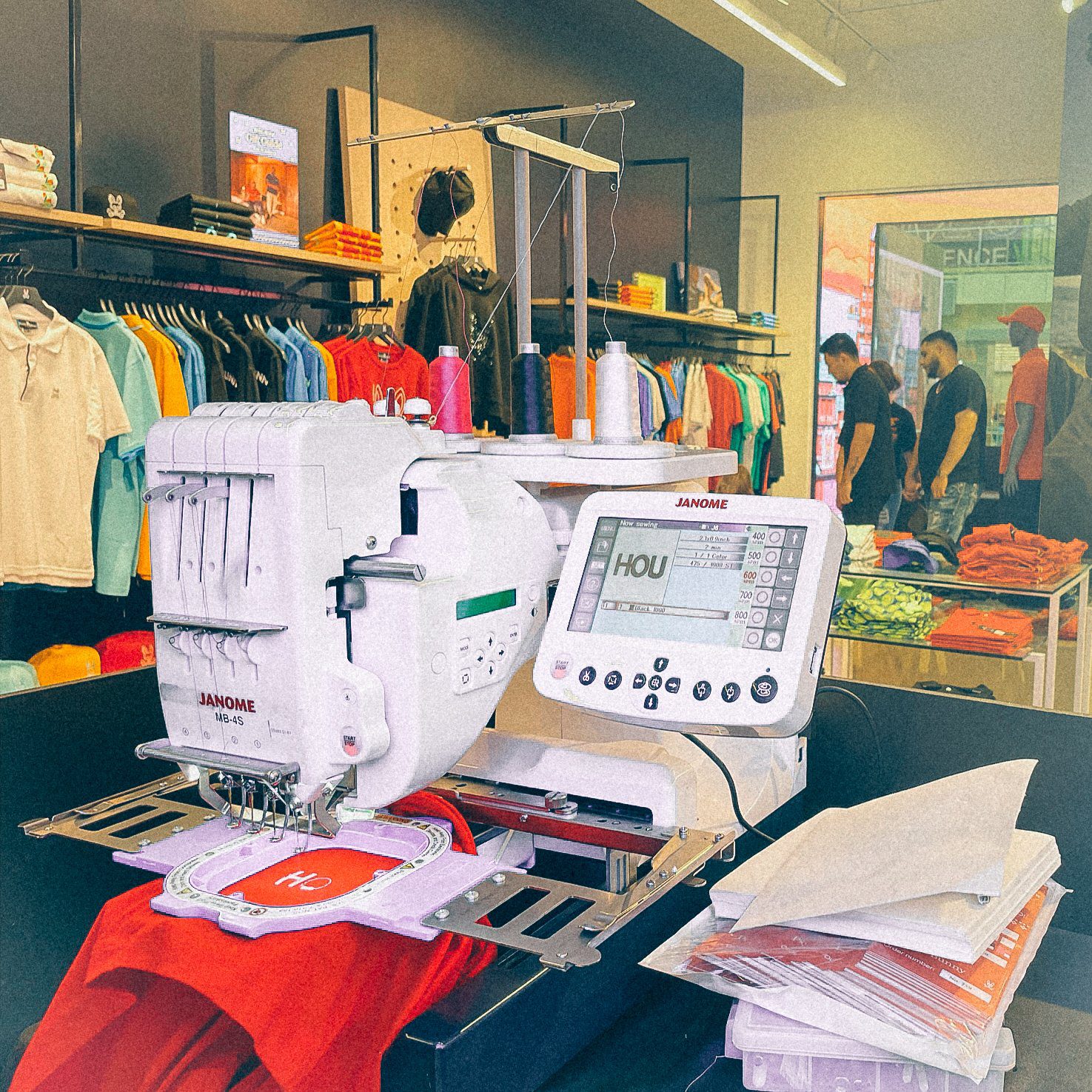The use of custom merchandise is becoming increasingly popular for live events as a way for fans to show their support and take a piece of the experience home with them. Embroidery is a popular choice for decorating these items, but coming up with designs that will appeal to fans can be a challenge. In this article, we’ll explore various approaches to generating unique and appealing embroidery designs for live event merchandise.
Why Live Merch Embroidery?
Live merch embroidery is a unique and interactive way to market and promote a brand. This form of marketing allows customers to personalize and take ownership of their clothing and accessories, making them walking billboards for the brand.
Additionally, live embroidery events offer a memorable and engaging experience for customers, allowing them to see the process of their clothing being customized in real-time. This not only builds brand loyalty but also creates a sense of community and encourages customers to share their experiences on social media, further promoting the brand.
Another advantage of live merch embroidery is that it offers a tangible, high-quality product that customers can keep and use for years to come. This makes it a cost-effective form of marketing, as the customers are essentially doing the advertising for the brand.
Incorporating live merch embroidery into a brand’s inventory can also differentiate them from competitors and create a unique brand identity.
Read more about Why Merch Embroidery is The Perfect Event Marketing Tactic

Steps To Creating The Best Design For Your Event:
- Research the event and audience: To create a design that will resonate with fans, it’s important to understand the event and the people attending it. Consider the genre of music, location, and target demographics when researching.
- Look at the event branding and logos: Official event logos and branding can provide inspiration and a starting point for your designs. Look for patterns, colors, and themes that you can incorporate into your designs.
- Consider the items you’ll be embroidering: Different types of merchandise, such as t-shirts, hats, or tote bags, may require different design approaches. For example, designs for hats may need to be smaller and more simplistic than designs for t-shirts.
- Utilize fan-generated content: Encourage fans to share their own designs or ideas for what they would like to see on merchandise. This can help to generate new and unique designs, and also increase engagement with the event.
- Utilize trending design elements: Look for current design trends, such as typography, illustrations, or patterns, that can be incorporated into your designs. This can help to keep your designs fresh and current.
- Collaborate with artists and designers: Partnering with local artists and designers can bring a new level of creativity to your designs. This can also be an opportunity to support the local arts community while generating unique designs.

Embroidery services for events typically involve the following steps:
- Design Concept: The first step is to determine the desired design for the event. This could be a logo, text, or other graphic elements. The design can be provided by the client or created by the embroidery service provider.
- Fabric Selection: The next step is to choose the type of fabric to be embroidered. This could be a shirt, hat, towel, or any other suitable item. The embroidery service provider can offer suggestions based on the event’s needs.
- Digitization: Once the design is finalized, it needs to be digitized for the embroidery machine to understand. The digitization process involves creating a computer file that the machine can read and use to sew the design onto the fabric.
- Sampling: Before mass production, a sample of the design is made and checked for accuracy and quality. Any changes or adjustments can be made at this stage.
- Production: Once the design is approved, the embroidery service provider can begin producing the final product. This may involve using an automatic embroidery machine or hand-sewing the design.
- Quality Control: After production, a final inspection is performed to ensure that the final product meets the desired quality standards.
- Delivery: The final step is to deliver the completed items to the client. This may involve shipping the items or delivering them in person, depending on the event’s needs.
Many different types of merchandise are suitable for embroidery, including:
- Clothing: Shirts, jackets, hats, and other clothing items are popular choices for embroidery.
- Bags: Backpacks, tote bags, fanny packs, and other types of bags can be embroidered with logos or designs.
- Towels: Bath towels, beach towels, and other types of towels are popular choices for embroidery, particularly for hotels or spas.
- Home Goods: Pillows, curtains, table runners, and other home goods can be embroidered with decorative designs or logos.
- Corporate Gifts: Backpacks, patches, key chains, and other types of corporate gifts can be embroidered with company logos or other graphics.
When choosing merchandise for embroidery, it is important to consider the fabric type and weight, as well as the design size and complexity. The embroidery service provider can offer suggestions based on the specific needs of the project.
Read More about Screen Printing vs. Embroidery: An Honest Buyer’s Opinion

Check Out How To Digitize Graphics for Embroidery:
If you think you can take on the printing process, this video is for you. Otherwise, you can leave it to live embroidery services like Family Industry to not only create your artwork, but also create your files, provide the merch, AND print on-site at your event.
@TockCustom shows you how to digitize your own custom graphics to embroider on any embroidery machine! I used PE-Design 10 for Windows, which works amazing with what I need it to do.





